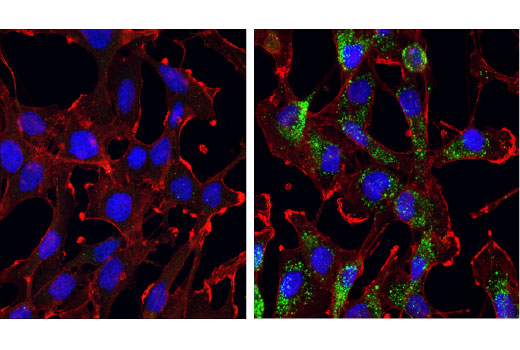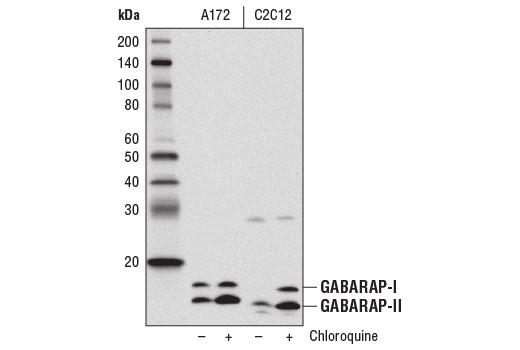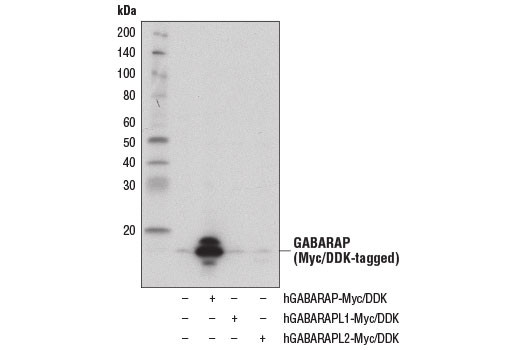 全部商品分类
全部商品分类



Monoclonal antibody is produced by immunizing animals with a synthetic peptide corresponding to residues surrounding Arg40 of human GABARAP protein.


Product Usage Information
| Application | Dilution |
|---|---|
| Western Blotting | 1:1000 |
| Immunofluorescence (Immunocytochemistry) | 1:200 - 1:400 |





Specificity/Sensitivity
Species Reactivity:
Human, Mouse, Rat




Supplied in 10 mM sodium HEPES (pH 7.5), 150 mM NaCl, 100 µg/ml BSA, 50% glycerol and less than 0.02% sodium azide. Store at –20°C. Do not aliquot the antibody.
For a carrier free (BSA and azide free) version of this product see product #64055.


参考图片
Confocal immunofluorescent analysis of A172 cells, untreated (left) and chloroquine-treated (50 μM, overnight; right), using GABARAP (E1J4E) Rabbit mAb (green) and β-Actin (8H10D10) Mouse mAb #3700 (red). Blue pseudocolor = DRAQ5® #4084 (fluorescent DNA dye).
Western blot analysis of A172 and C2C12 cells, untreated (-) or chloroquine-treated (50 μM, overnight; +), using GABARAP (E1J4E) Rabbit mAb.
Western blot analysis of extracts from 293T cells, mock transfected (-) or transfected with constructs expressing Myc/DDK-tagged full-length human GABARAP (hGABARAP-Myc/DDK; +), human GABARAPL1 (hGABARAPL1-Myc/DDK; +), or human GABARAPL2 (hGABARAPL2-Myc/DDK; +), using GABARAP (E1J4E) Rabbit mAb.






 用小程序,查商品更便捷
用小程序,查商品更便捷




